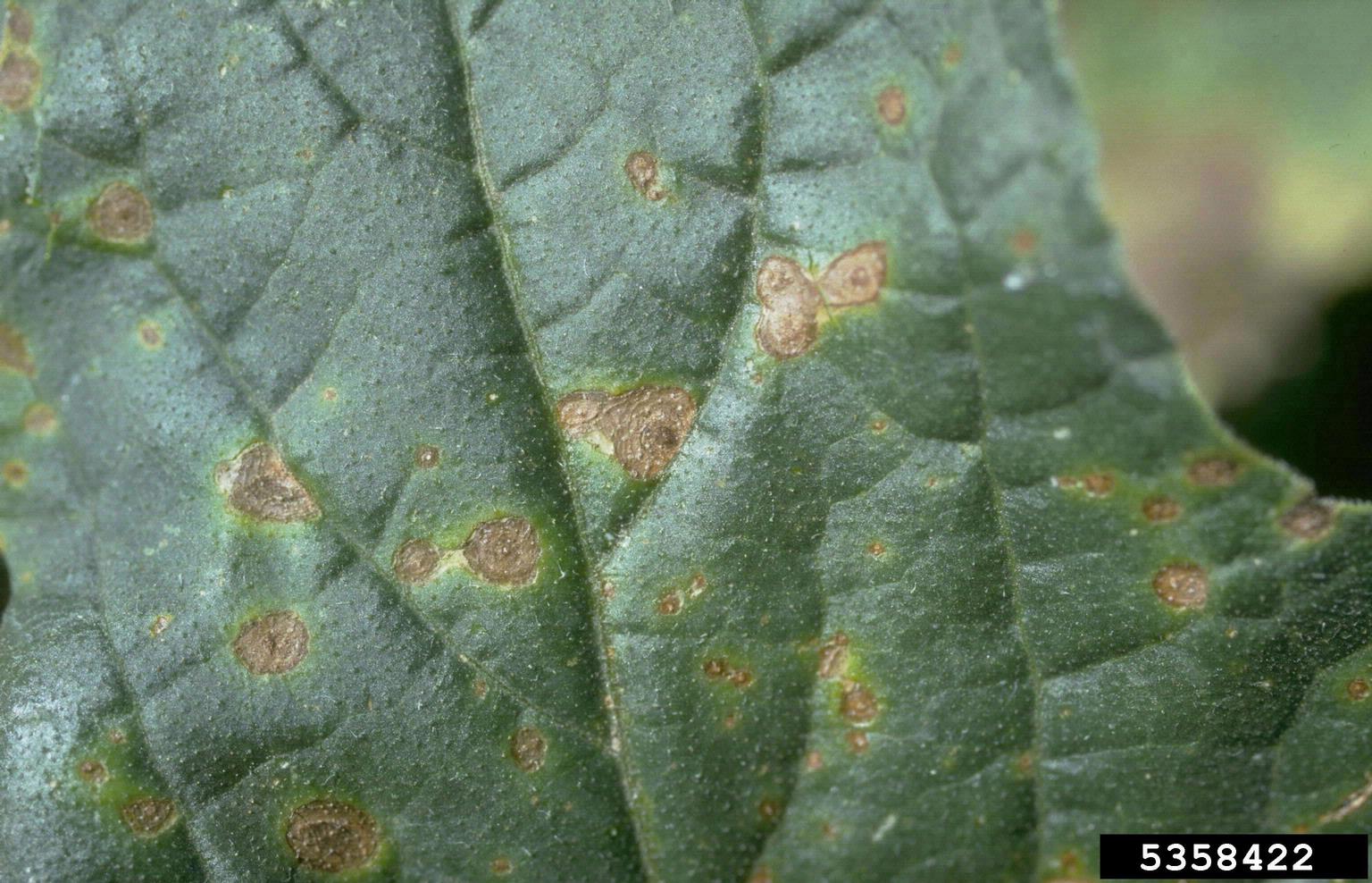Cucurbit Alternaria Leaf Spot: Treating Leaf Blight Of Cucurbits


Everyone knows the old adage: April showers bring May flowers. Unfortunately, many gardeners also learn that cool temperatures and spring rains followed by summer’s heat can bring fungal diseases. One such disease that thrives in the warmth of midsummer that follows wet spring weather is alternaria leaf spot on cucurbits.
Cucurbits with Alternaria Leaf Blight
Cucurbits are plants in the gourd family. These include gourds, melons, squash, pumpkin, cucumber and many others. A fungal disease known as alternaria leaf spot, alternaria leaf blight, or target leaf spot is known to affect several members of the cucurbit family, but is especially a problem on watermelon and cantaloupe plants. Leaf blight of cucurbits is caused by the fungal pathogen Alternaria cucumerina. This fungus can overwinter in garden debris. In spring, new plants can be infected by contact with infected garden surfaces and the splashing of rain or watering. As temperatures warm up in early to midsummer, temperatures become just right for mass spore growth. These spores are then carried on wind or rain to affect more plants, and the cycle continues. The first symptoms of cucurbit alternaria leaf spot is small (1 to 2 mm.), light brown spots on the upper sides of older leaves on cucurbit plants. As the disease progresses, these spots grow in diameter and begin to display a ring or target-like pattern with lighter brown rings in the center and darker rings around them. Leaf blight of cucurbits mostly infects only the foliage, but in extreme cases it can affect the fruit causing dark, sunken lesions that may or may not be slightly fuzzy or downy. Infected leaves may curl or grow in a cupped shape. Eventually, infected foliage drops from the plant, which can cause the fruit to become damaged by wind, sunscald, or ripen prematurely.
Controlling Alternaria Leaf Spot on Cucurbits
Prevention is the best method for controlling leaf blight of cucurbits. Also, clean up garden debris in fall or spring, before planting new plants. It’s recommended that cucurbit crops be rotated on a two year rotation as well, meaning after a garden site is used to grow cucurbits, cucurbits shouldn’t be planted in that same site for two years. Certain fungicides are effective in controlling cucurbit alternaria leaf spot. It is recommended to spray fungicides every 7 to 14 days to prevent and control the disease. Fungicides that contain the active ingredients azoxystrobin, boscalid, chlorothalonil, copper hydroxide, maneb, mancozeb, or potassium bicarbonate have shown effectiveness in preventing and treating leaf blight of cucurbits. Always read and follow fungicide labels thoroughly.
Gardening tips, videos, info and more delivered right to your inbox!
Sign up for the Gardening Know How newsletter today and receive a free copy of our e-book "How to Grow Delicious Tomatoes".
-
 Zinnias On Repeat: 10 Glorious Cut-And-Come-Again Varieties For Endless Summer Bouquets
Zinnias On Repeat: 10 Glorious Cut-And-Come-Again Varieties For Endless Summer BouquetsThese zinnia varieties keep giving all summer, making them the perfect choice for dedicated cutting gardens – or just the occasional homegrown bouquet.
By Ellen Wells
-
 Create A Romantic Garden Straight Out Of Bridgerton: Regency Era Romance In Your Garden
Create A Romantic Garden Straight Out Of Bridgerton: Regency Era Romance In Your GardenTry some romantic garden ideas straight out of Bridgerton. Flowers and gardens in the Regency era were lush and charming and you can get the same look!
By Bonnie L. Grant